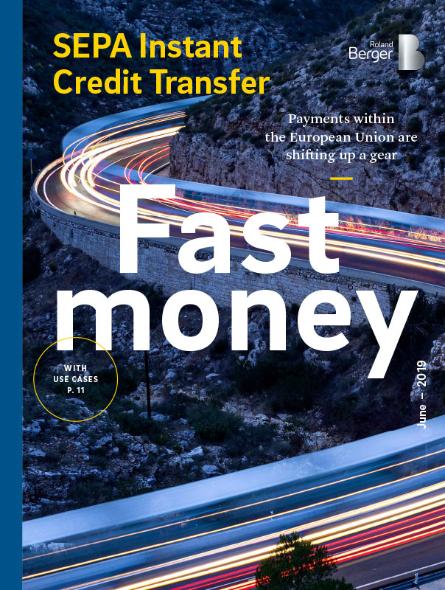SEPA Instant Credit Transfer – Payments are moving into the fast lane
![{[downloads[language].preview]}](https://www.rolandberger.com/publications/publication_image/RB_SAL_19_006_Sepa_Instant_Payments_Cover_download_preview.jpg)
Instant payments: How SEPA is transforming EU credit transfers and helping banks to fight back against Fintech and BigTech players.


For too long banks have sought cost savings for payment services and avoided required investments in their payment infrastructure. Therefore, the account-based payment infrastructure in Europe is mostly outdated and innovations have taken place outside of the banks' sphere. It does not come as a surprise that the customer interface was gradually lost to Fintech and BigTech players.

However, current developments such as Payment Service Directive 2 (PSD 2) and instant payments are forcing banks to finally upgrade their infrastructure and the traditional bank account. If done correctly, this long-awaited upgrade can become the banks' new anchor for innovative solutions and services .
We are convinced that SEPA instant payments will soon become the new standard for money transfers and thus nothing banks can use to differentiate. Hence, they need to answer the question of how the adoption of a new SEPA standard could be framed into a broader strategic offering. Examples include combining existing and new products with instant payments or leveraging the start of PSD 2 and the related opening of the account infrastructure to offer services outside the traditional banking universe.
The repositioning of the bank account at the client interface should thus be on top of the management agenda, not only from a technical perspective but even more so from a broader strategic point of view – maybe even more than the other manifold challenges banks currently face.

![{[downloads[language].preview]}](https://www.rolandberger.com/publications/publication_image/RB_SAL_19_006_Sepa_Instant_Payments_Cover_download_preview.jpg)
Instant payments: How SEPA is transforming EU credit transfers and helping banks to fight back against Fintech and BigTech players.